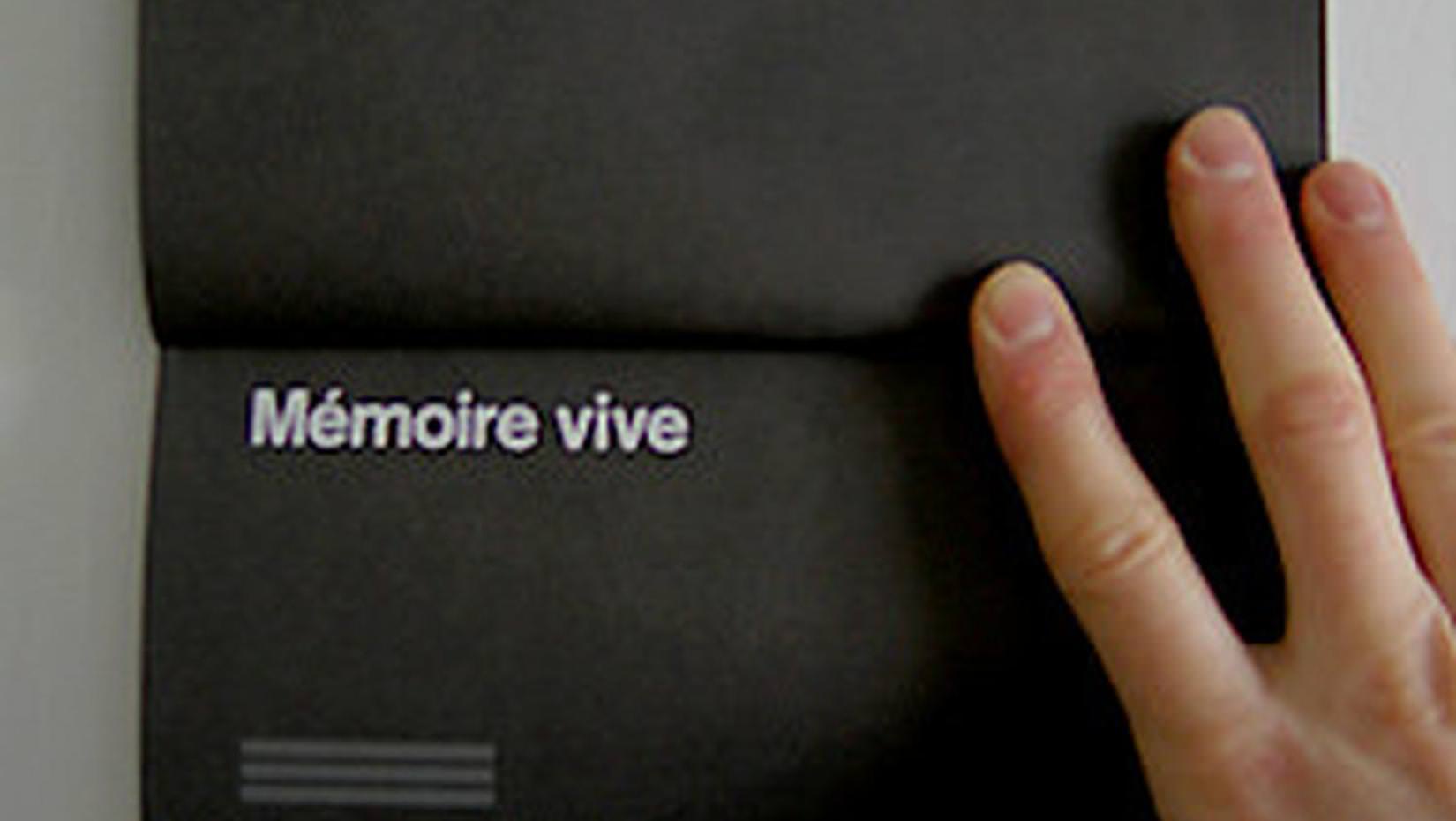Programming
Internationale Virologie Numismatique
Horatio Nelson : 1758-2002
Horatio Nelson: 1758-2002 est une intervention orchestrée par l'Internationale Virologie Numismatique (IVN), une désorganisation qui s'intéresse à la subversion et au détournement des concepts de pouvoir, d'aliénation et d'oppression.
Mémoire vive
Initiated by DARE-DARE in collaboration with the Centre d'histoire de Montréal, Mémoire Vive provided a framework for reflection that brought together artists and stakeholders in the heritage field.
Horatio Nelson: 1758-2002 is an intervention orchestrated by the International Numismatic Virology (IVN), a disorganization interested in the subversion and misappropriation of concepts of power, alienation and oppression.
Somewhere between a joke, sabotage, and a radical political gesture, IVN's action around Montreal's oldest and most controversial monument begins with a "heightening" of the memorial dedicated to the famous British admiral Horatio Nelson. This simple, even minimal act will be echoed in the city, in the public square. By intervening in the collection of the Centre d'histoire de Montréal, the VNI hopes to stimulate a dialogue on the strategies applied by the powers that be and the counter-powers as regards the recuperation of public art as an ideological support.
Mathieu Beauséjour has been presenting his work regularly since the mid-90s. His project Survival Virus de Survie (1991-1999) has been presented in various places in Quebec, Canada and France. He recently benefited from a residency at the Centre Culturel Canadien in Paris organized by Quartier Éphémère (2000). Since 1999, he has been working on the Internationale Virologie Numismatique project, which was presented at Skol during Les Commensaux (Montreal, 2001) and at Glassbox (Paris, 2002). He is a recipient of creation grants from the CALQ and the CAC. He is also a cultural worker (at Galerie Clark and the Regroupement des Centres d'Artistes Autogérés du Québec), an anarcho-utopist and a zookeeper.
Press releases
UN VOL DE DYNAMITE (July 24, 2002)
A work of art of the International Virology Numismatic was stolen on Monday evening
On the Place Jacques-Cartier in Montreal was exposed until Monday evening a sculpture of the IVN representing sticks of dynamite. This work commemorated a historical event in 1893 when four young dynamitards had tried, without success, to blow up the Nelson monument. It should be remembered that this monument had been, and still is, a source of controversy among the city's residents: Why on Montreal soil this symbol of British imperialism?
"It is true that the project called for such a reaction," notes Mathieu Beauséjour, instigator of the IVN. "The interventions of the VNI at the Nelson monument were intended to revive the memory of the debate surrounding it. I see that this has been achieved. I hope that this gesture had a political motivation...or at least an aesthetic one!"
VNI is appealing to the thief or thieves to return the sculpture intact to the Montreal History Center. No legal action will be taken against the individuals. The police have been notified of the theft.
THE NELSON MONUMENT CASE
Much more serious and far more grave dangers than the existence of the Nelson monument threaten us.
These words were spoken by the Honourable Judge Dugas at the sentencing of four young dynamiters who had attempted to "blow up" the Nelson monument on November 20, 1893.
During a visit to the Centre d'histoire de Montréal in October 2001, IVN discovered the original Nelson monument. A curious detail: the statue, carved in the effigy of the valiant fighter, was lying on the ground. It was presented as an urban artifact, next to historical pieces of public furniture. The IVN decided to investigate.
The monument to British Admiral Horatio Nelson is the oldest monument in Montreal. Installed on Jacques-Cartier Square in 1810, it honors the war hero who was killed in action while winning the victory at Trafalgar against Napoleon in 1805. Upon hearing the news at a ball, Montreal's bourgeois society cried out "A monument! The statue's life has been marked by many twists and turns, making it the most controversial monument in Montreal's history. Even today, according to the staff of the History Centre, visitors regularly express their displeasure at seeing this symbol of British imperialism kept within its walls.
Following its investigation, the IVN concluded to act and raised the original monument weighing 2000 pounds with a pedestal plated with gold leaves. One month later, on July 1st, Confederation Day, the NVI did the same thing at the foot of the Nelson Column, on Jacques-Cartier Square in Old Montreal. This time, the NVI's intervention referred to an attempted attack on the monument in 1893.
The very contradiction of the two actions taken by the IVN reveals that indeed dangers "much more serious than the existence of the Nelson monument threaten us". For the real subject of this whole affair is not the Nelson monument but everything that is said and done around the memorial.
Horatio Nelson 1758-2002, an intervention of the International Numismatic Virology to be seen until September 22, 2002 at the Centre d'histoire de Montréal and at the foot of the Nelson column on Jacques-Cartier Square in Old Montreal, starting July 1 for an indefinite period of time.




